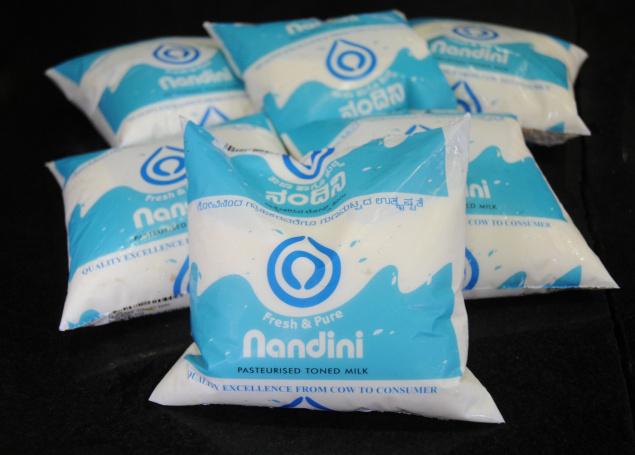Bangalore, Oct 17, 2013: Samples of sachets of Nandini milk and curd bought on Thursday. DH Photo
Lack of uniformity in the display of processing date and expiry date on Nandini milk and curd packets processed and produced by the Karnataka Milk Federation (KMF) has left customers flustered.
While some packets display the ‘use by’ date, others display just the date and customers are left to speculate whether it is the date when the milk was processed or the date by which they are supposed to use it. While some packets have the black print, some just have a purple seal. A few have the next day’s date and some the current date. On a few other packets, the date is smudged leaving the customers clueless about whether it is safe for consumption or not.
This family residing in Girinagar is perplexed to find neither the processing date nor the expiry date on the Nandini milk packet they buy. On Thursday morning too, in the packet that they bought, no date was mentioned. They were unsure whether the milk was safe to consume or not.
“I have noticed this for the last couple of months. There is no mention of any date whatsoever on the milk packet we get at home,” Aruna (name changed), told Deccan Herald.
KMF officials said that they would ensure that no distributor sells milk without date printed on it. H C Gopala Reddy, joint director (quality control), Karnataka Co Operative Milk Producers’ Federation, said the staff would be instructed not to allow such packets get into the crates.
Shopkeepers not aware
When this reporter checked with a couple of shopkeepers, they were not sure why there were different dates on the milk and curds packet delivered to them the same day. Some said it was the date of packaging, others thought it was the expiry date. Some wondered, “Why do we have tomorrow’s date on this packet? I had never noticed!”
Reddy said all packets distributed after 10.30 am to the shops carry the date of the next day. For example, if you buy either milk or curds on October 18 after 10.30 am, you will find October 19 on the packet. This is the date before which it is to be consumed. “For items with short shelf life, we mention expiry date, not processing date,” he said.
He said there were two systems in place. One in which they use an Inkjet coding machine to print the expiry date (in small black print) and the other is purple ink in a bigger font. The reason behind this is that the Bangalore Dairy does not have sufficient Inkjet machines.
“There is a point in the customers’ confusion. We will ensure that there is uniformity in the format. We will see to it that from now on, the packet mentions ‘use by,’ instead of just the date,” Reddy said. It will take some more time before converting it all to Inkjet system, he said.
“Currently, there are about 65 machines. We need to cater to 10 per cent more. The problem is we cannot procure the machines overnight. The suppliers take time. It costs about Rs 2.5 lakh per machine,” said KMF managing director A S Premnath. He ruled out the possibility of fake packets.
“Fake packets have been found only twice in the last five years and it is not easy to duplicate them. Copying the film used for packing is very expensive. The last two times, people indulging in irregularities were caught and complaints were lodged against them.”

